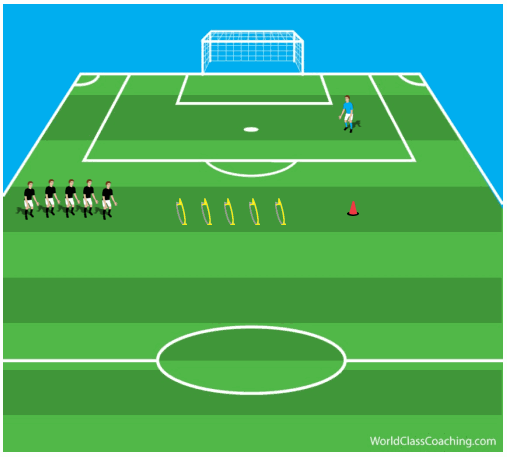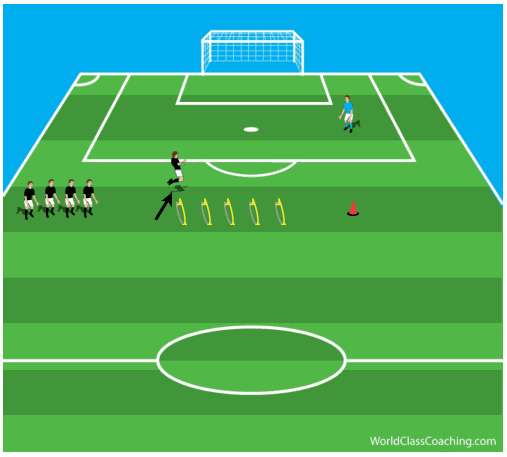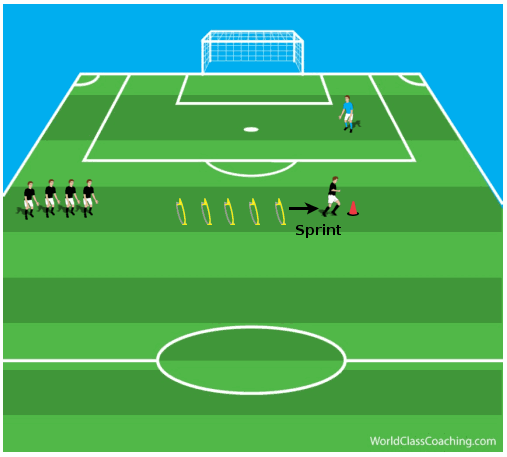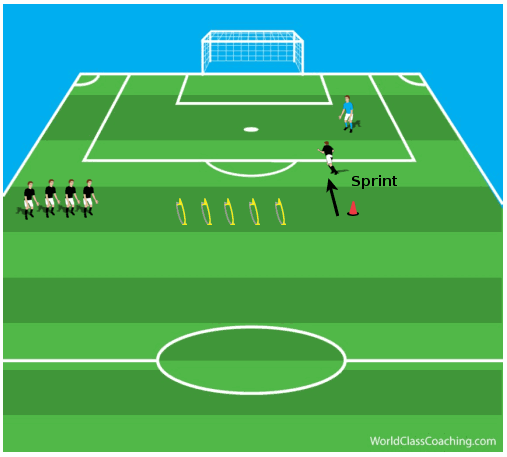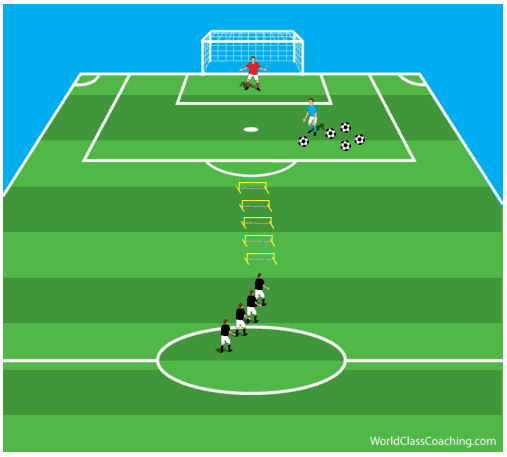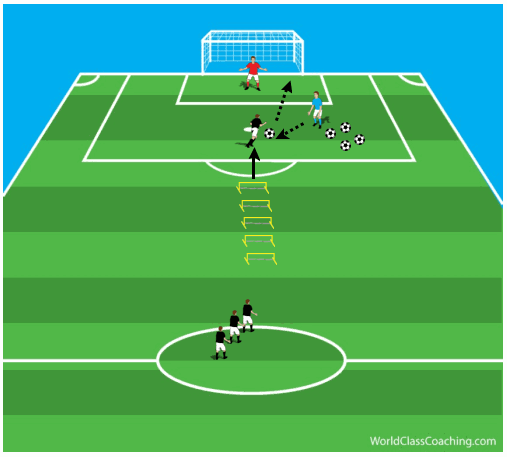By Justin Cresser
Today’s article is a first of a series entitled ‘Soccer Science’, in which we present the latest findings from Sports Science research in soccer, and discuss how these findings may influence the way we train we our players.
ARTICLE TITLE:
The title of the article we will discuss today is: ‘Effects of in-season short-term plyometric training program on leg power, jump- and sprint performance of soccer players.’ It was published in the October 2010 issue of the Journal of Strength and Conditioning Research. The article can be accessed by clicking on the link below:
http://www.ncbi.nlm.nih.gov/pubmed/20844458
MAIN FINDINGS:
The main findings from this article are that- in comparison to players who partake in a normal training program, youth soccer players that complete plyometric training twice per week, in addition to their normal training routine, performed significantly better on power-related assessments such as the squat jump, the countermovement jump and the first 5 meters of a 40 meter-sprint. As such, these exercises are highly recommended as part of both pre- and in-season training programs.
APPLICATION TO TRAINING:
Explosive power is critical to successfully performing many movements and actions required in soccer such as accelerating past a defender, vertical jumps, and shooting from distance. Training for power can be done with Olympic-style weight training, medicine ball training or plyometric training. However, plyometric training, which involves doing jump-related exercises that focus on training the muscles to produce the maximum amount of force in the shortest amount of time, is probably the most convenient. Many coaches do not incorporate this type of training during the competitive period either due to a lack of time or the belief that the high-intensity nature of these exercises may be counter-productive to on-field performance. However, the results of the article presented above suggest that it may be beneficial for coaches to include them in training sessions during the in-season as well. An important consideration is the volume of plyometric exercises. Doing 1 to 2 sets of two exercises should be adequate. High volume workouts are not recommended for in-season training.
The following are two plyometric exercises that can be incorporated into training once per week during the competitive period to improve the explosive power in your players:
SAMPLE ACTIVITY 1:
This exercise uses the space just outside the penalty box for the playing area. Set up a row of five hurdles, in a horizontal line, so that the row is approximately 10 yards from the top of the 18-yard box. Each hurdle should be approximately 1 yard apart. Have your players stand 5 yards behind the first hurdle in the row. Place a small cone 7 yards away from the last hurdle in the row so that it is also 10 yards from the top of the penalty box (Figure 1).
When ready, have the player at the front of the line run towards the first hurdle. As they just about reach this hurdle, have them jump as far up as possible, so that they land in the space between the first and second hurdle (Figure 2). As soon as they land, they must immediately jump over the second hurdle and continue the process until they have cleared the 5th and final hurdle.
As soon as they clear the final hurdle, they must sprint towards the cone in front of them, perform a cut, and then sprint until they have passed the top of the 18-yard box (Figures 3 and 4).
Have each player perform 5 to 6 repetitions (1 set) and then have the players rest for 2 to 3 minutes. Perform a total of 2 sets. Instruct the next player in line go as soon as the player in front of them clears the final hurdle. This will allow the activity to flow and prevents players from standing around. You may need to set up a second station if you have a large squad.
Coaching Points:
- The player should attempt to jump as far up as possible on each jump by explosively extending the ankles, knees and hips. The player should also use the arms to assist in power production by forcefully swinging both arms back during the downward phase prior to taking off.
- The jumps in the exercise are intended to be short response, which means the ground contact time between landing and subsequent takeoff should be minimal.
- When sprinting towards the cone and the edge of the 18-yard box, ensure that the players use short, powerful steps while maintaining good posture (leaning forward slightly).
SAMPLE ACTIVITY 2:
This exercise uses the 18-yard box and the area just outside it for the playing area. Set up a row of five hurdles so that the last hurdle in the row is placed on the top edge of the D and in line with the penalty spot. Each hurdle should be 1 yard apart. Have a small group of players line up 5 yards behind the first hurdle in the row, facing the goal. The coach will stand inside the 18-yard box close to the penalty spot with a supply of balls (Figure 5).
When ready, have the player at the front of the line run towards the first hurdle. As they just about reach this hurdle, have them jump as far up as possible, so that they land in the space between the first and second hurdle. As soon as they land, they must immediately jump over the second hurdle and continue the process until they have cleared the 5th and final hurdle.
After clearing the last hurdle, the player should sprint towards the coach who will play a pass into their path for them to finish on goal with one touch (Figure 6).
As before, have each player perform 5 to 6 repetitions (1 set) and then rest for 2 to 3 minutes. Perform a total of 2 sets. Instruct the next player in line go as soon as the player in front of them clears the final hurdle. This will allow the activity to flow and prevents players from standing around. You may need to set up a second station if you have a large squad.
Coaching Points:
- The player should attempt to jump as far up as possible on each jump by explosively extending the ankles, knees and hips. The player should also use the arms to assist in power production by forcefully swinging both arms back prior to taking off.
- The jumps in the exercise are intended to be short response, which means the ground contact time between landing and subsequent takeoff should be minimal.
- When finishing, the player must attack the ball and adjust their body appropriately to finish with one touch. The follow through of the finishing leg should be towards the target.
Best of Luck,
Justin
Justin Cresser – Has coached soccer at various levels both in North America and abroad (Hong Kong and Africa). His most recent position was as the Assistant Technical Director at the Soccer Club of Toronto. He has his National Diploma from the NSCAA and is also a certified strength and conditioning coach.

